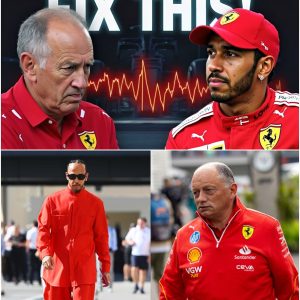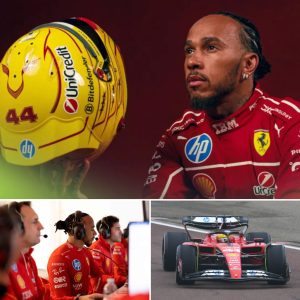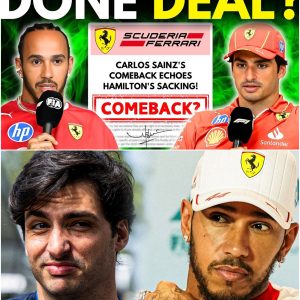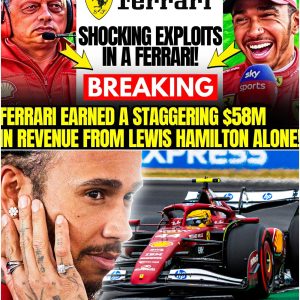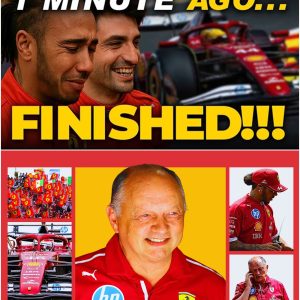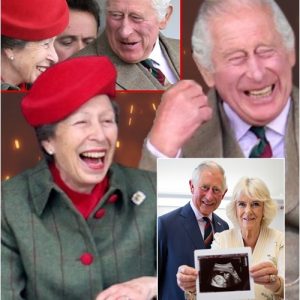In the high-octane world of Formula 1, where fortunes can turn with the speed of a qualifying lap, the union of Lewis Hamilton and Scuderia Ferrari was hailed as more than just a driver transfer; it was a seismic event.
The seven-time world champion, leaving the familiar embrace of Mercedes after more than a decade, was embarking on a heroic quest: to restore the legendary Italian team to its former glory.
This was meant to be the final, glittering chapter of an unparalleled career, a high-stakes gamble that promised a Hollywood ending.
Yet, as the season unfolds, the script has taken an unexpectedly dark turn, transforming the celebrated move into a burgeoning crisis that threatens to unravel both a legacy and a team’s reputation.
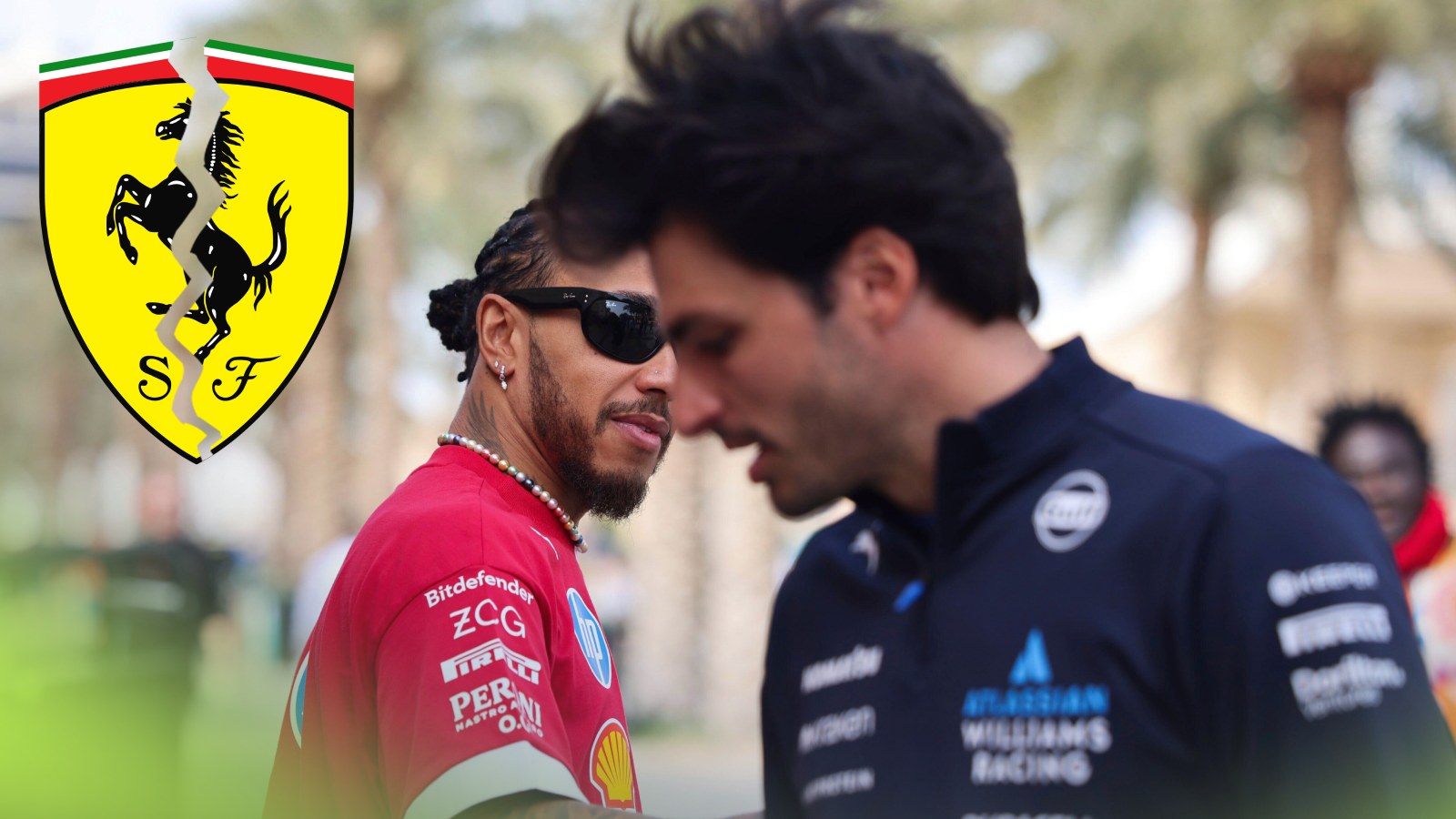
The initial fanfare has dissolved into a palpable sense of unease. Instead of leading the charge for championships, Hamilton has found himself mired in the midfield, struggling to extract performance from a temperamental machine. The statistics are stark and unforgiving: no wins, no podiums, and a string of performances that have been shockingly inconsistent for a driver of his caliber. The Hungarian Grand Prix served as a particularly brutal magnifying glass on his predicament . On a track where he has historically dominated, Hamilton was a shadow of his former self, his frustration broadcast to millions as he wrestled with a car that seemed alien to his touch.
But the issues run deeper than mere on-track performance. Hamilton’s own cryptic comments have fueled speculation of turmoil behind the closed doors of Maranello. His admission of “a lot going on in the background that’s not great” hinted at a systemic discord far more complex than simple aerodynamic inefficiencies . For nearly two decades, Hamilton was the centerpiece of the well-oiled, meticulously structured Mercedes machine—a culture of clinical precision and unwavering support. At Ferrari, he has been thrust into a world steeped in passion, politics, and a uniquely Italian way of operating. This cultural chasm, often underestimated, appears to be a significant hurdle. The seamless synergy he enjoyed at Mercedes has been replaced by a jarring disconnect, leaving him looking isolated and increasingly agitated.
It is this undercurrent of dysfunction that has brought a shocking twist to the forefront of F1 gossip: the potential for a dramatic escape. Buried within the ink of Hamilton’s multi-year contract is a crucial escape clause, a mechanism that allows him to walk away if certain performance targets are not met . Suddenly, what was once unthinkable is now a tangible possibility. Should Hamilton decide that the mountain is too steep to climb, he could exit the team, leaving Ferrari in a catastrophic position.
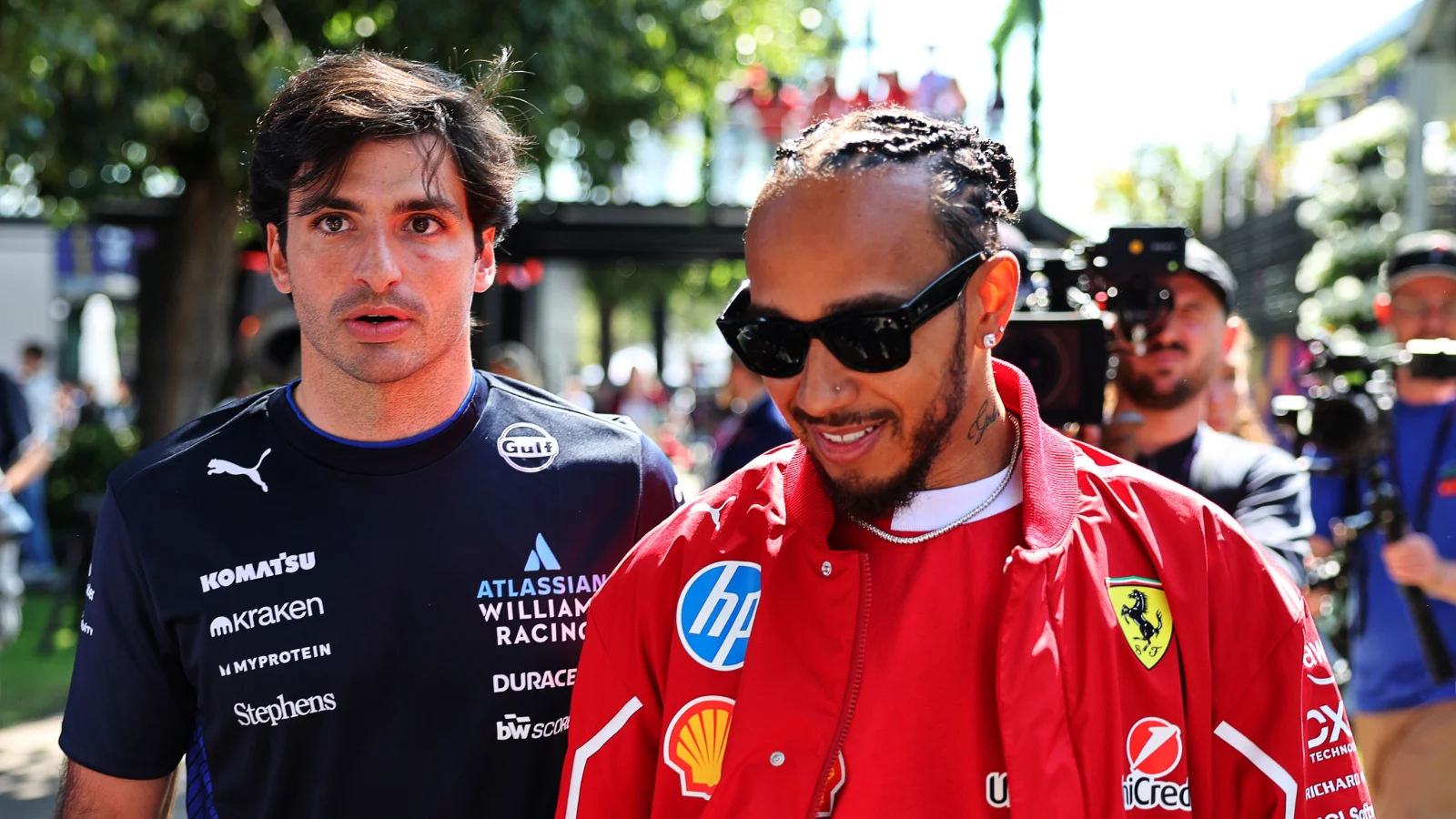
This is where the story pivots to its most ironic and compelling chapter: the return of Carlos Sainz. The Spaniard was the collateral damage of Hamilton’s arrival, a talented and loyal driver unceremoniously pushed aside to make way for the superstar. Sainz, known for his intelligence, adaptability, and fierce work ethic, landed at Williams, a team on the rise but a clear step down from the Prancing Horse. However, like Hamilton, Sainz’s contract contains its own escape clause, a provision that could pave the way for one of the most sensational comebacks in the sport’s history .
The narrative is almost poetic in its symmetry. While Hamilton, the celebrated champion, struggles to integrate, Sainz’s value has arguably never been higher. He is a driver who understands the intricate culture of Ferrari, having navigated its pressures and politics with considerable success. His ability to adapt to different teams and machinery throughout his career stands in stark contrast to Hamilton’s long, singular tenure at Mercedes . Sainz is not just a familiar face; he is a known quantity, a stabilizing force who has consistently delivered strong results, even in less-than-perfect machinery.
Ferrari now finds itself staring down the barrel of a public relations disaster. The Hamilton project was meant to be a statement of intent, a declaration that the team was once again ready to conquer the world. Its potential failure would be a humiliation of epic proportions, a testament to an inability to harness even the greatest talent of a generation. In this context, bringing Sainz back would be more than just filling a vacant seat; it would be a story of redemption. It would be an admission of a mistake, but also a move to salvage the team’s image, positioning Sainz as the returning hero, the one to steady the ship after the superstar experiment collapsed .

The unfolding drama is a complex tapestry of ego, ambition, and cultural identity. Hamilton’s flashes of brilliance have still been visible, but they have been fleeting, often undone by uncharacteristic penalties, questionable strategy calls, and sheer bad luck . It raises the question of whether this is a temporary slump or a sign of a fundamental incompatibility between driver and team. Can Hamilton, at this stage in his career, truly reinvent himself to fit the Ferrari mold, or is the gap simply too wide to bridge?
As the season progresses, every race weekend becomes a new referendum on this grand experiment. The pressure is mounting, not just on Hamilton to perform, but on Ferrari’s management to justify their monumental decision. The whispers in the paddock are growing louder, and the possibility of Sainz’s return is no longer a fringe theory but a credible scenario being discussed by insiders. It represents a potential reset for a team in turmoil, a chance to pivot from a high-risk, high-reward strategy to a more pragmatic and stable foundation.
Ultimately, the saga of Hamilton at Ferrari has evolved from a simple sports story into a captivating human drama. It is a tale of risk, identity, and the search for glory in the twilight of a magnificent career. Whether it ends in triumph, as originally envisioned, or in a dramatic and premature separation, the outcome will have lasting repercussions for everyone involved. For now, the world watches, holding its breath, as one of Formula 1’s most storied teams and one of its greatest drivers navigate a crisis that could culminate in one of the most stunning and ironic twists the sport has ever seen: the return of the rejected son to save the kingdom .
